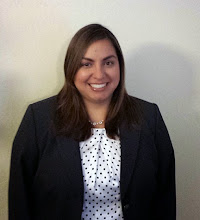In life, there are few moments when the world seems to stop and a collective memory starts to form.
In my own lifetime, there are two moments when this has happened - one a tragedy that shook the entire nation and the other a temblor that literally shook the greater Bay Area.
I was 11 when the Loma Prieta earthquake erupted at 5:04 p.m. on October 17. I was at my cousin's house, in a second-story apartment with my sister and a few cousins. The Kern Avenue apartment in Gilroy seemed to sway and the thing I remember most is that the quake seemed to last forever. I remember running to the doorway of the bathroom for the last few moments of the quake. My baby cousin slept through the 7.1 quake.
My dad was at work at Gilroy Foods and my mom worked for TG&Y, a Wal-mart type store that used to be on First Street in Gilroy. She was on the road home from a training in San Jose. It was a world before cell phones existed so we sat and waited until our parents showed up at the apartment to pick us up to know that they were okay.
Being a kid, I didn't pay much attention to the overall impact of the quake. I can't really remember the newscast from the weeks after. I can only remember my own personal tragedy. Our house was unscathed for the most part but my cat Biscuit, a white and black tuxedo cat who used to follow me and my sister around the neighborhood like a dog, never came home. He had disappear once before when he followed us trick or treating to another neighborhood, but he came back a few days later. I prayed and prayed like only a true believer can for Biscuit to come back home. He never did.
A dozen years later I'd become jaded enough that one warm September morning while I was walking from the fitness room at San Jose State University's student union to the locker room I glimpsed a newscast and thought, "Oh, another bombing."
It was only when I arrived in my office on Sept. 11, 2001 that I realized the magnitude of what was happening. I worked in the Dean's Office for one of the colleges on campus and I fielded calls all more from students and professors inquiring if they had to come to class given that the twin towers were falling. I just told them the campus had not been closed, but they would have to make the decision for themselves.
By noon the CSU chancellor had decided to close the campus. I was the building coordinator at the time, which meant I was responsible for clearing the building in an emergency. I was only 23, and looked like one of the students on campus. The Dean and one of the IT guys helped me clear out the classrooms and the offices, lending an air of authority to my quest. Most people left quickly and willingly. A few of the math and science professors hemmed and hawed about leaving their offices, but in an hour we had everyone out.
I don't remember why, but I'd driven into work that day rather than taking the train, which would have stranded me in the city until 4 p.m. The IT guy who lived in Hollister rode home with me and we listened to the radio all the way home. All we could say was how unbelievable it all was. I dropped him at the train station in Gilroy, where his car was parked, and went home to turn on CNN. Unlike when I was a kid, I watched the news nonstop, watching as the death toll rose and waiting for answers.
In some ways 9/11 led me to my life as a journalist. A few weeks after 9/11, a Philadelphia Inquirer photographer was sent to Afghanistan. A year later Peter Tobia was invited to SJSU for a School of Journalism alumni dinner. The Dean bought a table and at the last minute someone cancelled, and he invited me to go. Tobia talked about what it was like to be in Afghanistan directly after 9/11. Slide after slide of his photos showed abject poverty, heroin addiction and the aftermath of a country abandoned by the U.S. after the Cold War ended. I remember thinking if someone like Tobia hadn't gone to Afghanistan someone like me would never have seen those images.
It planted a seed in my head that journalists can do something great by telling the stories of people who don't have a voice. On my best days at work I do this. The other part of it for me is that we can give people hope, or at least that is something I try to do at my small community newspaper.
We launched a series today in commemoration of the coming 20th anniversary of the Loma Prieta earthquake. We have invited people to share their own personal memories with the Weekend Pinnacle, but we also have quite a few stories planned. The first week includes a look back at the immediate aftermath of the quake in San Benito, how building codes have changed and what makes San Benito the earthquake capital of the world. More coverage will include how emergency personnel responded in San Benito, how recent disasters have changed emergency planning and how individuals can get prepared, as well as a few other pieces. It is stories like this can change the world for the better in a little way.
Subscribe to:
Post Comments (Atom)

No comments:
Post a Comment